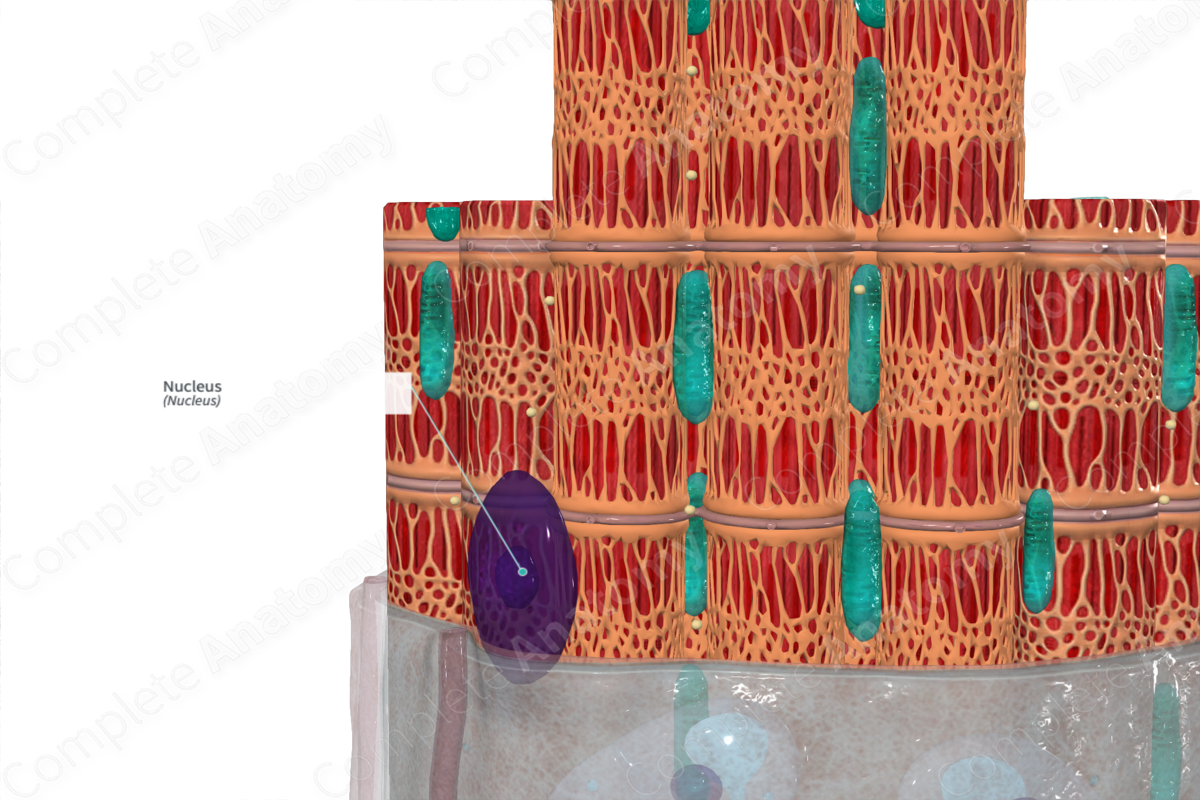
Quick Facts
The nucleus is a spheroid body within a eukaryotic cell, separated from the cytoplasm by the nuclear envelope, and containing chromatin, a nucleolus, and nucleoplasm. In the nucleus, the cell's genetic information is stored on the chromosomes and RNA transcription and processing occur (Dorland, 2011).
Related parts of the anatomy
Structure
Nuclei (plural of nucleus) are located at the periphery of the muscle fiber. They are spherical or elliptical, generally with a diameter of 3–10 µm. Nuclei house the genetic information of the cell, enclosed by a nuclear envelope.
Key Features/Anatomical Relations
Due to the exceptional length of muscle fibers and their high protein content, these cells have multiple nuclei. Dispersed along the length of the muscle fibers, nuclei are particularly numerous in the region of the neuromuscular junction.
Function
Nuclei house the genetic information of the cell. Specifically, skeletal muscle nuclei are responsible for regulating the metabolic needs of the portion of the sarcoplasm that surrounds it.
References
Dorland, W. (2011) Dorland's Illustrated Medical Dictionary. 32nd edn. Philadelphia, USA: Elsevier Saunders.
List of Clinical Correlates
- Infertility
- Trisomy
- Monosomy
- Nondisjunction
